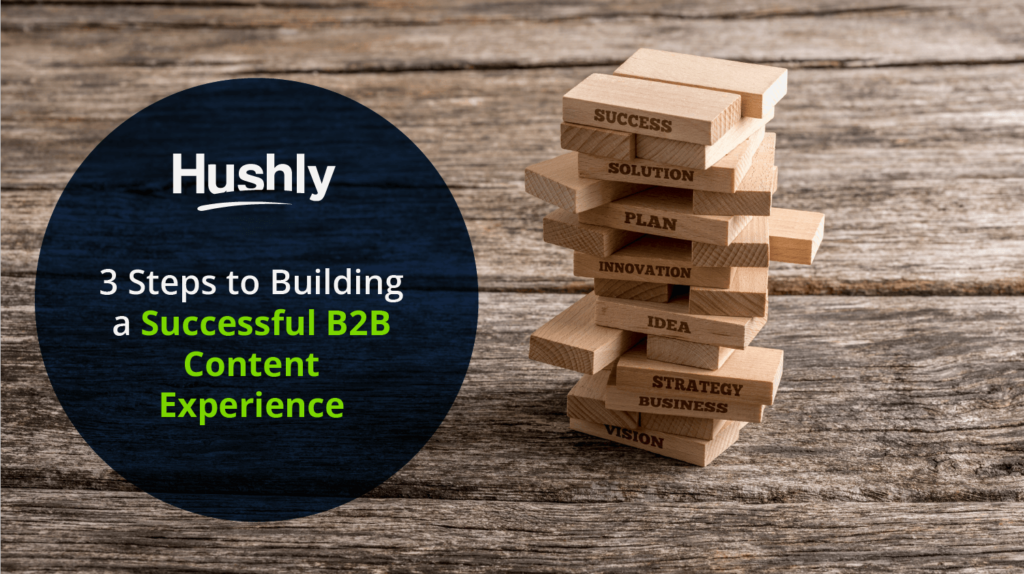Filters
Content Type
Topic
What Exactly Is Content Experience Maturity and How Does It Impact Your Organization?
Every content strategy aims to create an experience for your customers. Unfortunately, there’s a lot of confusion around the term content experience. Many people think it’s just about creating a page of content and hoping that they’ll find what they need when they need it. Unfortunately, with approximately 70% of B2B content going unused, that approach simply isn’t viable.
You need to have a system in place that helps you determine whether your content is delivering what your audience wants, along with a content experience that will keep them coming back for more. To do this, you need to go beyond the standard content strategy and implement a content experience maturity model to help you develop processes and systems to ensure that your content delivers value to your customers.

What is Content Experience Maturity?
Content experience maturity is the process of creating a system that helps you determine whether your content is delivering value to your customers, whether they find it when they need it, and whether they take the action you want them to take. It’s a model that will help you build processes and systems that ensure that your content provides the experience your customers expect and deserve.
Customer Experience Maturity vs. Content Experience Maturity
Since content experience maturity has such a heavy focus on your audience’s experience with your brand, it’s easy to get customer experience maturity and content experience maturity confused. In fact, these two terms are often used interchangeably, but they’re very different.
- Customer Experience Maturity: is the process of creating a system that will help you determine whether your customers are happy with the experience they’re getting from your brand when they interact with your channels and use your products and services. It focuses on the customer’s journey as a whole and helps you determine where your brand stands amongst the competition.
- Content Experience Maturity: is the process of creating a system that will help you determine whether your content is delivering value to your customers, whether they find it when they need it, and whether they take the action you want them to take. It focuses on the customer’s journey within your brand and helps you determine whether your content is working the way you want it to.
Why Content Experience Maturity Matters
Content experience maturity is crucial to the success of any B2B brand. The typical B2B buying cycle is complex, and prospects need to feel confident that your brand is the right choice before they decide to work with you.
If your content isn’t delivering the experience your customers expect both during and after they’ve completed your buying cycle, they might find a better solution that provides a better experience for them. This can result in lost business, and it can also result in the demise of your brand.
Evaluating Content Experience Maturity: 5 Pillars
Content experience maturity is a burgeoning topic in content marketing. As content marketing evolves, brands are beginning to understand better the relationship between their content and the business goals they aim to achieve. This understanding is key to improving content experience maturity and delivering the experience that your customers expect. To evaluate the state of your content experience maturity, you need to look at your content from several different angles and assess the following five pillars:
Strategy and Planning
The first thing you need to do to evaluate your content experience maturity is assess your content strategy and planning. A solid content strategy helps you determine what kinds of content you should create, why you should create it, and who it should be aimed at. It also enables you to prioritize your content, ensuring that you’re creating the right amount of content for the right reasons and in the proper channels.
Make sure you are taking the time to address some critical questions, such as:
- Is your strategy centered around the needs of your audience?
- Does it tie back to your brand’s short- and long-term goals?
- Are your content teams collaborating to build a cohesive strategy across functional silos?
Content Creation
The second thing you need to do to evaluate your content experience maturity is assess your content creation process. A solid content creation process helps you determine the kinds of content that are most effective for your brand, industry, and audience. It also ensures that your content is created in the most engaging way possible. Finally, it allows you to measure the effectiveness of your content, ensuring that you’re able to generate maximum impact with your content.
Content Architecture
The third pillar of evaluation involves assessing your content architecture. A solid content architecture helps you determine the organizational structure of your content. It also enables you to ensure that your content is delivered in the most efficient way possible. It also allows you to create a framework for reviewing your content, ensuring that you’re able to identify and address opportunities for improvement across the board.
Think of your content architecture like your website architecture – without the proper framework in place; you won’t be able to create a cohesive and consistent experience for your visitors. Content architecture is the same.

Source: Usability.gov
Content Operations
Content operations are the fourth pillar of evaluation, and they help you determine the most effective way to deliver your content to your audience. This not only involves where you’re sharing your content, but the tools that you’re using to deliver it, and the workflows you’re using to manage your content performance. Content operations help you ensure that your content is being shared in the most efficient way possible.
Content Optimization
Finally, the fifth and final pillar of evaluation involves assessing your content optimization process. A solid content optimization process helps you determine the most effective ways to optimize your content for search, social, and mobile. It also enables you to optimize your content for the channels where your audience interacts with your content the most.
It also enables you to measure the impact of your content, ensuring that you’re able to iterate, improve, and refine it so that it generates maximum impact.

Source: Hushly
Enhance Your Content Marketing with Hushly
Hushly is a proprietary platform that helps you create, optimize, and deliver exceptional content experiences. We help you build stronger relationships with your audience, generate increased revenue, and build a stronger bottom line. Hushly is the missing link in your content marketing strategy!
Are you ready to take your content marketing to the next level? See what Hushly can do for you! Request your demo today!
The post What Exactly Is Content Experience Maturity and How Does It Impact Your Organization? appeared first on Hushly.



